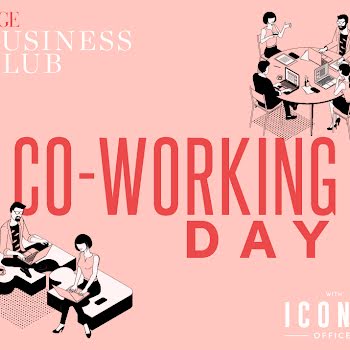
By IMAGE
24th Feb 2019
24th Feb 2019
Been out of the career game for a while? Colette Sexton garners some sound advice on facing your fears and breaking through job barriers with confidence.
Everywhere we turn, the news that Ireland is nearing full employment is gleefully thrown at us. In the space of four days in January, two companies alone –Facebook and Salesforce – announced 2,500 jobs here. Nearly 1,300 new roles were created per week in the 12 months to end of September 2018. In total, 385,000 jobs have been created in Ireland since 2013.
Of course, this is all good news, but the smiling faces at job announcements do not paint the whole picture. While the recovery has reached some people in society, there are still thousands who are trapped in long-term unemployment. More than 8,600 people have been out of work for more than a decade, while over 700 people have been unemployed for more than 20 years.
Some judge those in long-term unemployment without even knowing their circumstances. Many women are in long-term unemployment due to family commitments such as childcare or caring for elderly parents or sick relatives. Others took redundancy during the recession but have been unable to secure work since. Others still found themselves out of work due to an accident, an illness, or they moved to Ireland and have found it difficult to find work here.
Stigma
Yet there is a stigma of unemployment which can cause people who are jobless to be trapped in joblessness. A study by US economist Rand Ghayad found that companies rate candidates who have been recently made unemployed much higher than they rank candidates with similar qualifications, but who have been unemployed for more than six months.
Unfortunately, this bias is common in Ireland too, according to Paul Mooney, co-founder of Jobcare, a charity that helps long-term unemployed people access and retain work: “At a time of near-full employment, employers sometimes forget about the recent recession and its impact. There are good people still out there. Mainly, employers are interested in why someone has been out of the workforce – they’re most suspicious of unexplained absence.”
Those who are unemployed should not lose hope, however. Jobcare worked with 450 unemployed women between September 2017 and 2018. Of these, half of them have already secured work. About three-quarters of these women were aged over 35 and had a third level education, while a quarter were non-nationals.
Development
Those who have been out of work for long periods should not assume that everything they have done in the meantime is not valuable in a workplace environment. While it is a given that work has changed in recent years, that does not diminish any skills, achievements and contributions accomplished while out of work or previously gained in employment.
Paul says women are particularly prone to underestimate the voluntary and community work they do: “Liaising with a spectrum of medical or support bodies for a loved one, organising a community group or volunteering on school councils often goes unrecognised and unmentioned when women are speaking of their worthwhile experience.”
To take the first steps, those who are long-term unemployed should find family or friends or a group that encourage them to cultivate and value their stories. Then they will start recognising their strengths and experiences and can translate these into skills that are valued in the workplace.
Candidates should also prove to employers that they are willing to upskill and spend time on training and professional development, as well as their digital skills. On the other side, employers might be reluctant to hire people who are unemployed for a long period. They should realise that there are benefits to taking what they might think is a chance on someone.
“We find that people who have been long-term unemployed can often be more loyal and want to commit to and invest in your company,” says Paul. It is important to focus on what these people have to offer, and consider their transferable skills. There might be a short-term cost for training, but this can lead to a long-term gain of a valuable employee.
Flexible working
As well as that, there are government benefits to employers who hire people who have been long-term employed. One measure – JobsPlus – was introduced in July 2013 to provide grants to employers who recruit longer-term job seekers. Since then, 19,500 positions have been supported through the JobsPlus scheme. According to the Department of Welfare, nearly one-third (30 per cent) of those supported were female. It is a win/win situation for both employer and employee.
For some, though, re-entering the workforce is not just about finding a job from an open-minded employer. They might have practical and logistical barriers to finding work. This often occurs in the cases of those who have been out of the workforce due to raising children or caring for a relative full-time.
“This can impact the level of responsibility the woman can take on in a role, for example. In some cases, it can impact the hours they can take on, where part-time work is a requirement. They can also face barriers in terms of earning potential and whether it is financially worth returning to work (after covering the cost of childcare, and so on). This is particularly true for single mothers,” advises Paul.
In these cases, flexible work such as job sharing, flexitime or remote working would work well. These options are becoming more popular here, and 41 per cent of employees in Irish small and medium businesses have smart working options available to them, according to research from Vodafone.
Smart working
Sue Marshall, chief executive of Irish remote working company Abodoo, says that smart working can help people return to work while also avoiding extortionate childcare costs: “What people forget to take into account is if you are doing a two- or three-hour commute every day, you are paying for two to three hours of childcare when you are not earning any money. It becomes untenable. I can remember friends of mine who gave up work because they were not making any money.”
Smart working, especially flexitime and remote working, allows parents to work around the childcare problem. “You still have to pay for childcare. I’m not saying for a second that you can care for children while working from home, but you can only pay for childcare at the times you are working.”
Work to fit
Abodoo practise what they preach – Vanessa Tierney, co-founder of the company, starts work at 5am. She wakes her children at 8am, drops them to school, and does more work from 9.15am until she has to collect them from school.
“She has removed that pressure. She gets a lot more quality time with the children. She gets to do the school runs, to catch up with teachers, and she is not paying for additional childcare outside of the normal school or nursery day,” says Sue. “ at is exactly how it should be. People should [be able to] work to fit around their own family and lifestyle.”
Long-term unemployment might seem like a huge hurdle to overcome, but it is not impossible to break free from it. If you are planning to get back into work, you must believe in yourself and your abilities. Being outside of the workforce has given you a different view of the world. is is an asset. It means you will look at something in a different way to those who’ve been in the rat race constantly. Every company is looking for someone to think outside the box. That could be you. Happy job hunting.
This article was originally published in the March 2019 issue of IMAGE magazine which is on sale now.























